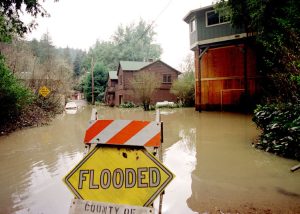President Donald Trump’s first proposed budget includes a measure that would scrap all funding for the National Flood Insurance Program’s Flood Hazard Mapping Program.
 The Flood Hazard Mapping Program sees the Federal Emergency Management Agency (FEMA) working to identify flood hazards, assess flood risks and work alongside states and communities to provide accurate flood risk information to guide mitigation actions.
The Flood Hazard Mapping Program sees the Federal Emergency Management Agency (FEMA) working to identify flood hazards, assess flood risks and work alongside states and communities to provide accurate flood risk information to guide mitigation actions.
The mapping program is also vital to the National Flood Insurance Program (NFIP), as it provides the underpinnings for its regulations and helps establish flood insurance requirements.
President Trump’s Blueprint Budget for 2018 suggests eliminating the $190 million of funding for the NFIP Flood Hazard Mapping Program, and says that other “more effective and fair” methods to fund flood mapping should be explored.
Importantly, the budget is worded such that it suggests scrapping the funding to spend time exploring other ways to achieve the same, not finding a new way to map flood risk across the U.S. and then scrapping the funding.
That suggests the risk of a lack of continuity or service, no matter whether a new and fairer way can be found to continue the work of the NFIP’s Flood Mapping Program.
A better way may be available, through the privatisation of flood risk, by encouraging private market re/insurers and risk modelling firms to develop their own views of the risk. However, the NFIP is likely to take time to privatise, even a portion of its risk, and the flood insurance rate maps produced by the project offer valuable risk visibility and guidance for the insurance and reinsurance markets.
The flood mapping program also helped FEMA achieve its historic first reinsurance placement, with data from the program providing an input to reinsurers risk and pricing decisions.
While it’s not essential that FEMA provides its own flood risk mapping services, and yes there may be other more cost-effective ways to ultimately achieve the same outputs, scrapping the funding without those mechanisms and processes in place could be damaging to the ability of the NFIP to price risks as accurately and for the private re/insurance market to step in.
Privatisation of the NFIP’s risk and greater use of reinsurance (as FEMA expects to make), would both help to stimulate the development of internal models and flood risk maps, as well as products from third-party risk model and analytics providers.
In the end that may well provide a better solution, many would agree that the NFIP flood maps and data are not always ideal, and there is certainly an appetite to privatise at least a portion of the NFIP’s risk, as Validus Group said recently that as much as 15% of the NFIP’s risk could be deemed “attractively priced.”
But we have to get there first and scrapping funding for one of the key inputs to a program that provides insurance to millions of people, many of whom would struggle to get covered in the private market anyway, could pose a risk to the functioning of the U.S. flood insurance marketplace.
With flood insurance a hot political topic right now, it is to be hoped that the political will sees the value in ensuring any budgetary changes to NFIP funding are made with the future of U.S. flood insurance in mind.


